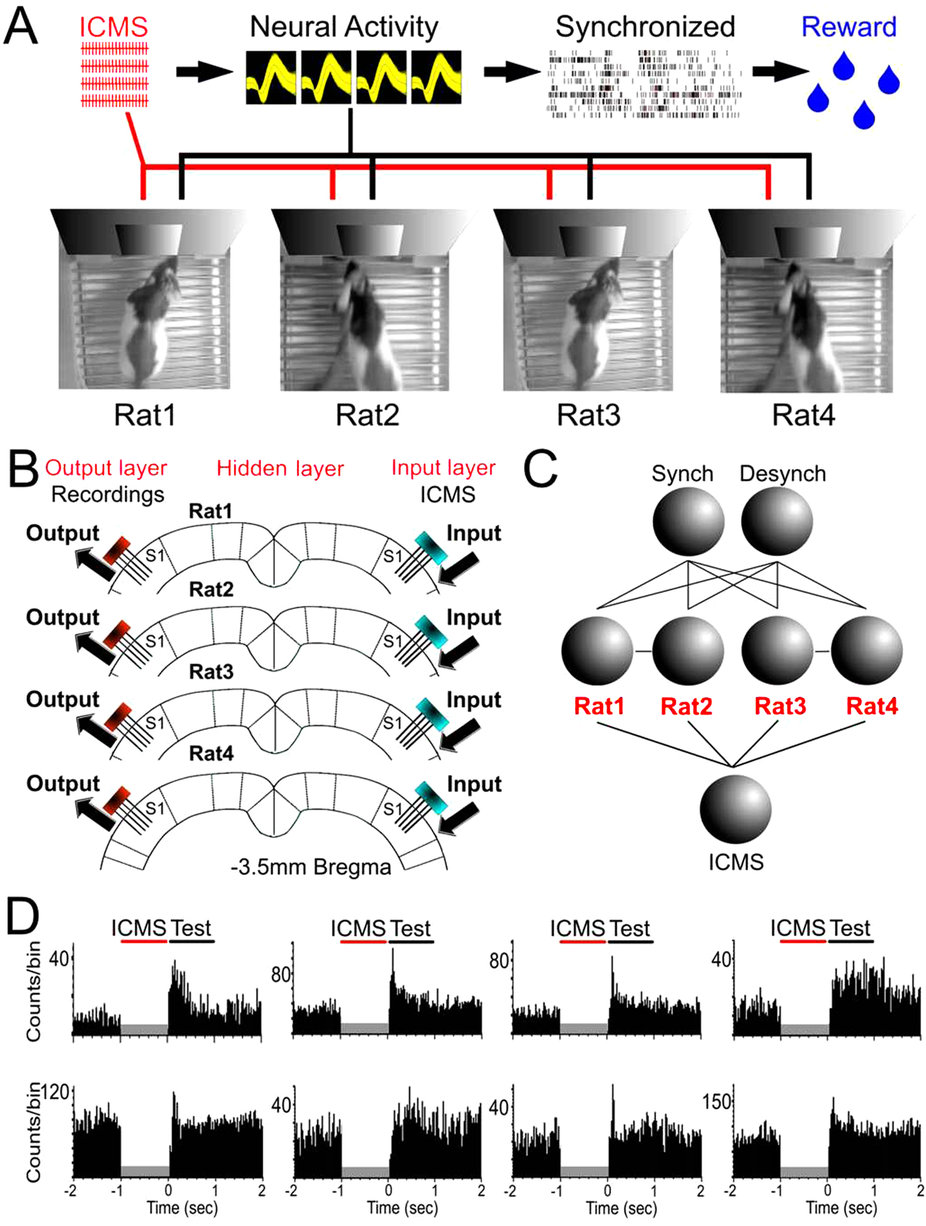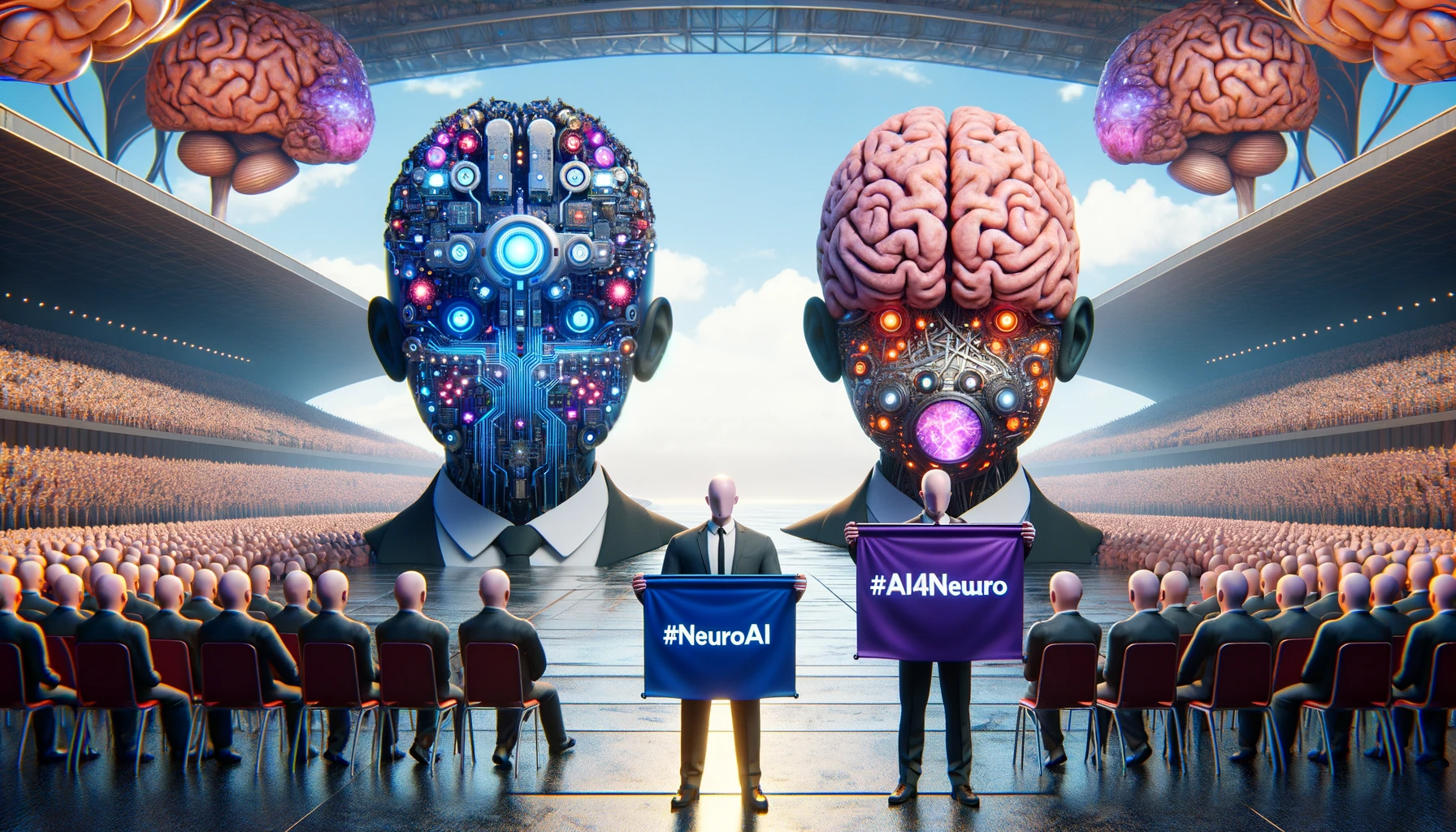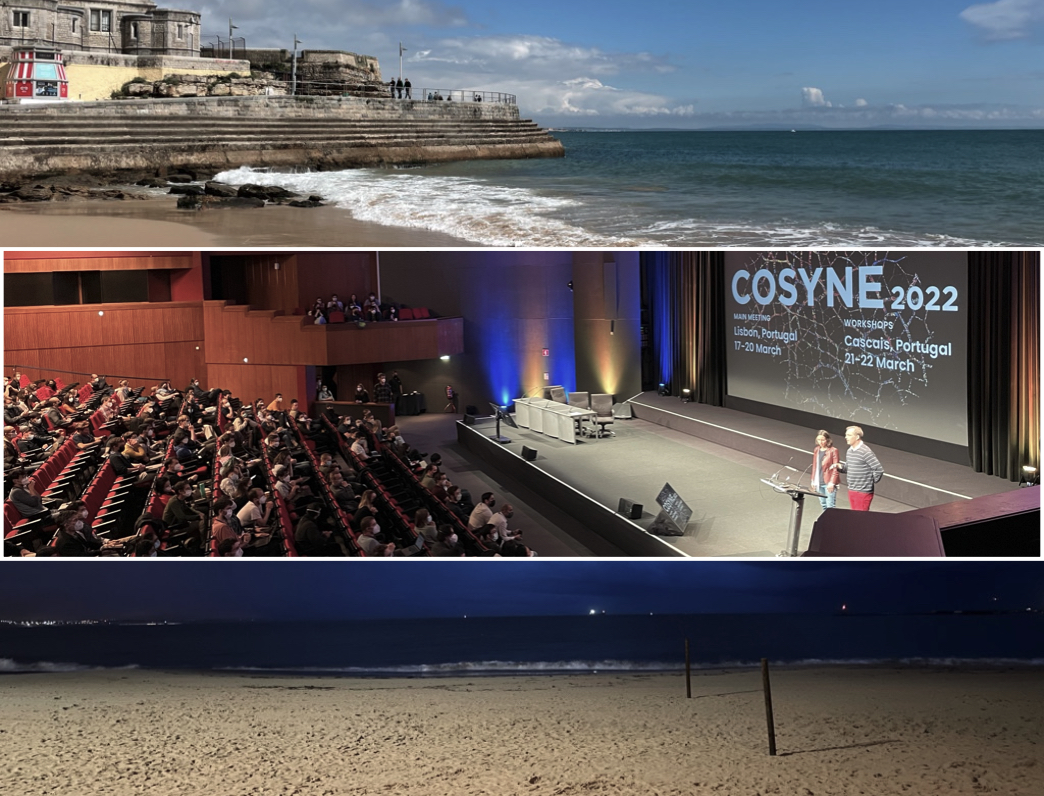So about a week ago I read this [1] article from Nature, about what I thought at the time was to become our rat-robotic overlords. If you haven’t read the article, here’s an excerpt from the abstract:
…Brainets, i.e. networks formed by multiple animal brains, cooperating and exchanging information in real time through direct brain-to-brain interfaces … built by interconnecting four adult rat brains … worked by concurrently recording the extracellular electrical activity generated by populations of cortical neurons distributed across multiple rats chronically implanted with multi-electrode arrays. Cortical neuronal activity was recorded and analyzed in real time, and then delivered to the somatosensory cortices of other animals that participated in the Brainet using intracortical microstimulation (ICMS)…
…different Brainet architectures solved a number of useful computational problems, such as discrete classification, image processing, storage and retrieval of tactile information, and even weather forecasting.
In case you weren’t following, let me rewrite the last part again, in bold: “ …different Brainet architectures solved a number of useful computational problems, such as discrete classification, image processing, storage and retrieval of tactile information, and even weather forecasting.”
Uh. Holy shit? This sounds truly incredible. Why? Because we humans can’t even predict the goddamn weather.
Is it actually as incredible as it sounds? Well, is anything ever? But, in my rush of joy for the neuroscientific community at large, and to make what I do (though not at all related) sound fucking awesome, I was trigger-happy and shared it on Facebook, after reading only half the paper. In my defense, it was Friday evening and I was not about to miss some free beer. But the feeling of being roped crept into my consciousness ever so slowly - I should have known: if there was ever an award for “Most Clickbait Abstract”, this paper would win, hands down. Well, I finished reading it, and I will now repent my sins by telling you exactly what this Brainet was and was not able to do.
If you’re looking for a TL;DR, here it is: it’s not as crazy as it sounds, not even close, it certainly isn’t forecasting weather in any meaningful way. That being said, it was still kinda cool…kinda. Skip to the section that says “What it’s not” if you really don’t want to read further.
Setup
I’ll start with the setup. Here’s Figure 1 from the paper describing the
Brainet:
 Figure 1.
Figure 1.
Each rat receives electrical input to S1, which is shorthand for somatosensory cortex, which is shorthand for “the part of your brain that processes information about things you touch.” Brief neuroscience tidbit: humans also have a somatosensory cortex, and different parts of it correspond to different parts of your body, such that when your hand touches something, the “hand” part of your S1 becomes activated, and when you touch something with your elbow, the “elbow” part of your S1 becomes activated, so on and so forth. If you are not familiar with this, just go Google “cortical homunculus”. Go ahead, I will wait. You’ll learn something interesting, such as the fact that the S1 region corresponding to your genitals is next to the region for toes, at least that’s what wikipedia says. Anyway, each of the 4 rats receive electrical input to S1 on one side of their brain, and has recording electrodes implanted in the S1 of the opposite side of their brain, because your brain literally has two halves. Fun fact, while S1 regions process tactile information that comes from your body, if you stimulate it electrically, it will FEEL as if you physically felt something in that part of your body.
Another tidbit that is important for understanding this experiment: your neurons (brain cells) represent information in a variety of ways, probably in ways far more complicated than our current understanding of it. But the easiest (read: most convenient for scientists) way it does so is to increase the rate at which it fires action potentials. At this point, I realize those of you who have some understanding of the brain is already familiar with this, and those who are not, there isn’t really a convenient way of formulating this, short of doing a full neuroscience tutorial. Okay, imagine each brain cell is a person holding one of those handheld clicker counters, the ones that bouncers use to keep track of how many people are inside the building. The only way for this person to communicate is to alter how fast he is clicking the clicker. Okay, I’m satisfied with that. So, in the figure, the “input” refers to electrical stimulation of S1, and “output” refers to recording of some number of neurons all clicking away. With the basics in hand, we can proceed to analyze the study.
What it’s not
The easiest way to break the article down is to start with what this Brainet
is not: it is NOT 3 rat brains connected together. On first glance, one would
expect that they are connected such that rat 1’s output is directly routed to
rat 2, who processes the information in some manner, which then outputs the
information to rat 3 through its own S1, so on and so forth. THAT would have
been cool, at least for the neuroscience nerds, and that was at least what I
was expecting. However, that is NOT what’s happening. What is not shown in the
diagram is that the input of each rat actually comes from a computer, not the
preceding rat. This might not sound like a huge deal, but let’s see how it is
directly relevant to the “Brainet for storage and retrieval of tactile
memories” experiment.
Basically, you have 3 rats in a chain, where rat 1 receives one of two patterns of electrical stimulation (call it A or B), and its brain responds in some manner, which is recorded at the output site (opposite S1) and the response causes stimulation of rat 2. The same thing repeats until rat 3, whose responds is then fed back to rat 1 to see if this “memory” is maintained. The cool way to do this would be, again, to route rat 1’s response directly into rat 2, then from rat 2 to rat 3, then from rat 3 to rat 1, where we can see if the read-out pattern is similar to the pattern used to stimulate originally.
What actually happens, though, is the following: rat 1 is stimulated on one side of the brain using pattern A, and response in its opposite S1 is recorded. Here, unless I’m GROSSLY mistaken, instead of routing this response to rat 2, it is processed in a computer, whereby the neural response of rat 1 is decoded and the computer determines whether pattern A or B was used to stimulate. Then, based on what the computer thinks, that pattern, in its original form, is used to stimulate rat 2, and the same thing repeats. It’s like playing broken telephone, but instead of each person passing on a distorted version of the message, there is a third person listening to you whispering your message to the next person down the table, and if the intruder was able to make out, say, 5 out of 10 words in the message, he would then give away the original untainted message instead to the next person in line. Now, it is still cool that the rat brain is able to differentially respond to the two stimuli (we will see how shortly), but it is not the rat-to-rat communication that is doing all the heavy lifting. Instead, the computer decoder is doing all the work: as long as it was able to reasonably guess the pattern, it effectively restores the message for the next rat. In my opinion, this kinda defeats the purpose of the brain-to-brain interface. In fact, it would accomplish the exact same thing by doing the message-passing procedure on the same rat 4 times. Sure, the probability of getting the message right still decreases as the chain length increases (0.5^n, where n is the number of rats), and it’s impressive that the performance doesn’t degrade dramatically. But by restoring the message every time it is decoded, it effectively nullifies the brain-brain communication between the rats, which is really the interesting thing here.
Can our robo-rat god forecast weather?
While we’re out here killing dreams, let me just lay it down: the weather
forecasting part is probably the most clickbait part of the whole article. You
know what they say, just read the abstract. Though in this case, you probably
also want to read the methods. When I think weather forecasting, I think
somebody telling me the upcoming temperature and humidity based on
meteorological data, and that’s really not what’s happening with the rats.
Basically, there are two independent weather variables - a change in
temperature and a change in pressure - and they are used to predict the change
in precipitation probability. As such, we have two binary variables which
combine into a 2-bit truth table to predict (with the logic predetermined)
whether a third binary variable is an 0 or 1, in such a fashion:
00 -> 0
01 -> 1
10 -> 1
11 -> 0
You might recognize this as the XOR (exclusive OR) operation, doesn’t really
matter if you don’t. I wrote them in 0s and 1s, you can just as well imagine
them to be A and B. The point is, this is not weather forecasting, this is
some extremely toyish model of how the weather works, i.e. if temperature and
pressure change in opposite ways, then we predict an increase in the
likelihood of precipitation. In terms of what the rats see, it is simply a
combination of things we’ve seen before. Rat 1 is dubbed the temperature rat,
who is responsible for interpreting temperature. Actually, “interpreting”
might even be too strong of a word here, since literally all it’s doing is
that it’s receiving pattern A or B (representing increase or decrease in
temperature) and then re-representing it in its opposite S1 such that the
decoder can make a guess of A or B. In any case, the temperature rat receives
input based on temperature changes, and analogously, the pressure rat receives
input based on pressure changes. They have to make “neural responses” such
that they can be decoded, and the binary combination lead to the input of a
third rat, the rain rat, being either A or B. In such a way, the Brainet
predicts weather (i.e. rain) not to match what actually happens, but to match
some predefined (and deterministic) model of how the weather works, as
prescribed by humans. In other words, it’s not predicting weather.
All is not lost
Well, now that I’ve disappointed you thoroughly, I will end on a positive
note. In my personal opinion, The most intriguing part of the study comes in
the form of the group two-choice discrimination task (second experiment,
“Brainet for stimulus classification”). In this experiment, all 4 rats are
effectively unconnected. They do, however, receive the same input
simultaneously: all As or all Bs. The task of the Brainet is to make a neural
response in its output (opposite) S1 to indicate whether the whole gang was
presented with A or B. The way they do this is quite interesting. To indicate
A, the rats have to “synchronize” their brain activity, which means changing
the firing rate (clicks per second, remember?) of the output neurons to match
the rest of the group (the average of the 3 other rats, to be exact), over
some period of time. This could be straightforward, as they could all choose
to click really fast, for a second, as soon as they perceive stimulus A, hence
increasing the average response, leading to an increased similarity of
everyone’s activity (the formal measure used is correlation, where R>0.2
successfully indicate “A”). This wouldn’t be all that exciting in itself,
because the increase in activity could simply be a natural response to being
electrically stimulated (though they did appropriate controls to rule against
this possibility).
The interesting part is how they indicate stimulus B: instead of synchronizing their activity, they have to desynchronize. In other words, each rat has to respond differently than the average of the 3 other rats. Mathematically, this corresponds to having a correlation coefficient of less than 0.2. If 3 out of the 4 rats achieve this decrease in correlation coefficient, then the stimulus is effectively decoded as being “B”. So the question is, how do the rats organize themselves to react differently, provided that this decrease in correlation is not some mathematical artifact?
Imagine there are 4 of us, and each of us is told to pick a number between 1 to 10. If we want to blindly “synchronize”, we could simply all pick the largest or smallest value possible, until we are rewarded. But to pick as differently from each other as possible? That’s quite a feat. According to the setup, the 4 rats are physically isolated, but with a transparent plexiglass door, which presumably enables visual/audio communication between the 4? Short of this, I really don’t know how the 4 of them can blindly work out a way to desynchronize. Again, this is assuming that having a correlation coefficient of <0.2 in 3 of 4 rats don’t happen often purely through chance, trusting in their statistical analysis of the baseline probability. Unless I’m grossly misinterpreting the study (in which case, somebody should let me know), this is definitely the biggest mystery of the study, and the mechanism of this (de)synchronization should have been the focus of investigation. Instead, the rest of the study was based on some fairly gimmicky extensions of the same idea, without further exploring how exactly the social interaction between the four rats enabled their neural communication, which the paper claims to be a big deal in its abstract.
Alas, this paper demonstrates an important point on reading scientific literature: don’t (always) judge a study by its abstract. As always, if anyone feels inclined to discuss or debate the outcomes and interpretations of this study, I am all ears. Same goes for comments and concerns.
[1] Pais-Vieira, M. et al. Building an organic computing device with multiple interconnected brains. Sci. Rep. 5 , 11869; doi: 10.1038/srep11869 (2015).




